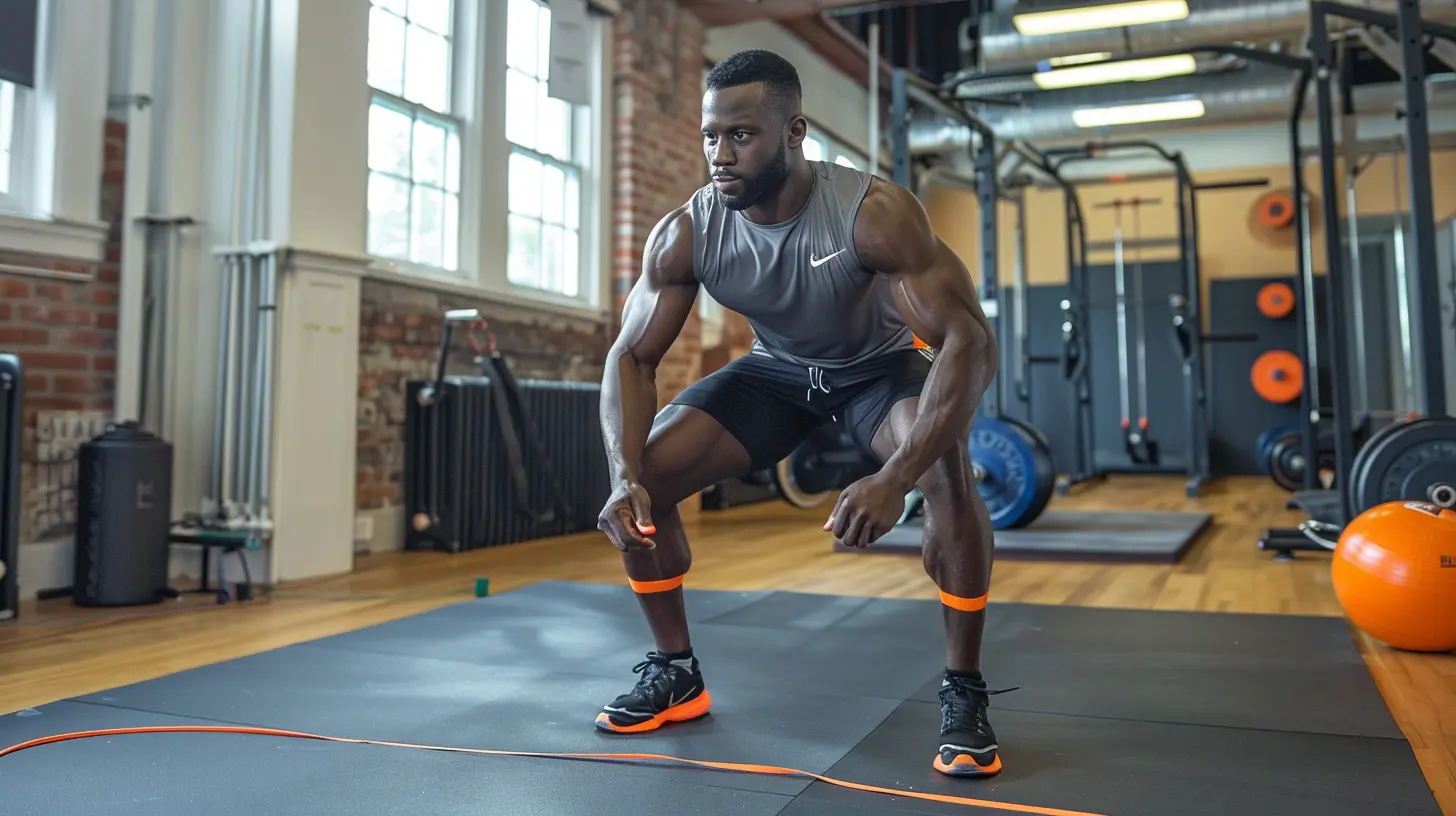Strength Training for Injury Rehab: What You Should Know
2 July 2025
Recovering from an injury can be tough—physically and mentally. Whether you’ve tweaked your shoulder, sprained an ankle, or gone through surgery, getting back to your regular self doesn’t happen overnight. But here’s the thing: strength training can be a game-changer in your recovery process.
Yep, we’re talking weightlifting, resistance bands, bodyweight moves—all dialed in with purpose and control. Sounds a bit strange, right? After all, why would you lift weights when you're injured? Shouldn’t you be resting?
Well, yes and no. Let’s break it all down together.

Why Strength Training Matters in Injury Rehab
When you're injured, your body actually starts to weaken almost immediately. Muscles atrophy (shrink), joints stiffen, and your nervous system goes a little haywire because it's trying to protect the injured area. This is where strength training steps in—like a superhero wearing gym shorts.The goal isn’t to go full beast mode. The goal is controlled, focused movement designed to restore strength, function, and confidence.
Strength training during rehab helps you:
- Stimulate blood flow to promote healing
- Rebuild muscular strength and endurance
- Improve joint stability
- Reduce the risk of another injury
- Re-establish neuromuscular coordination
In short, it brings your body back online.

Wait—Isn’t Exercise Risky After an Injury?
That’s a valid concern. But here’s the truth—total rest can actually delay your recovery. Modern physical therapy has moved away from the old-school notion of “bed rest.” Why? Because inactivity leads to stiffness, weakness, and even more problems down the line.Of course, you shouldn’t jump into a high-intensity powerlifting program three days after a knee injury. But under professional guidance, properly programmed strength training is not only safe—it's crucial.
So yes, you’ve got to move. But move smart.

The “Goldilocks” Zone of Rehab Training
Think of your rehab program like Goldilocks—you're looking for “just right,” not too little, not too much.Too little stress? Your muscles don’t wake up.
Too much stress? You risk re-injury.
This is where working with a qualified physical therapist or sports rehab coach makes all the difference. They’ll help you tailor your strength training to match your recovery timeline.

The Science Behind It: How Strength Training Heals
When you lift weights (or use any resistance), your body adapts. It tears muscle fibers slightly (in a controlled way), which then grow back stronger. But during rehab, the real magic lies in neural adaptation—that’s when your brain and body start to “talk” again.After an injury, your brain often changes how it sends signals to the injured area—sometimes even avoiding using it altogether. Strength training re-establishes that connection. It’s like rewiring your home Wi-Fi after a blackout.
Plus, resistance work boosts blood circulation, which is your body’s natural superhighway for nutrients and healing agents.
Types of Strength Training Used in Injury Rehab
Let’s unpack the different tools and techniques used. Not all strength training is bench presses and squats.1. Isometric Exercises
These are your go-to moves in the early stages of rehab. With isometrics, you contract a muscle without actually moving the joint. Think of pushing your hand against a wall and holding that tension. Isometrics are great because they:- Minimize joint stress
- Maintain muscle activation
- Reduce pain perception
Perfect for that “in-between” phase when you’re not yet ready for full movement.
2. Resistance Bands
Light and portable, these stretchy bands are a staple in rehab programs. They allow for low-load movements that can be scaled up as you progress. Plus, they’re awesome for targeting smaller stabilizer muscles that you might overlook in heavy training.3. Bodyweight Training
You don’t always need external weights to build strength. Bodyweight exercises like glute bridges, wall sits, and modified push-ups can work wonders. They help reintroduce functional movement patterns and provide a safe testing ground for your body's feedback.4. Free Weights and Machines
When you're further along in your rehab, you’ll likely transition to traditional weights. But the key here is progressive loading—that means slowly increasing the weight or resistance based on how your body responds. No ego lifting allowed.5. Functional Strength Training
This phase focuses on movement patterns that mimic real-life actions—like walking, lifting, and twisting. It’s where rehab meets real-world performance. Functional training reinforces balance, coordination, and core stability.
Listen to Your Body (Seriously)
Now more than ever, your body’s feedback is gold. Pain is your dashboard light—if something hurts (and not in a good way), stop. Rehab isn’t about pushing through pain; it’s about listening and adjusting.Ask yourself:
- Is this pain or just discomfort?
- Do I feel stable during the movement?
- Am I compensating with other body parts?
Your goal is to rebuild trust with your body, not trick it into submission.
Rehabbing Specific Injuries with Strength Training
Let’s go a bit deeper. Here’s how strength training plays a role in rehabbing common injuries.Lower Back Injuries
Low back pain is a beast, but strengthening your core (not just your abs!) is key. Focus on:- Glute activation
- Lumbar stability
- Anti-rotation exercises (like bird-dogs or Pallof presses)
Shoulder Injuries
Rotator cuff strains or dislocations need slow, controlled rehab. Start with:- Isometrics to reintroduce stability
- Scapular strengthening
- Resistance band work for rotator cuff muscles
Overhead work and heavy pressing come way later—don’t rush it.
Knee Injuries
Post-ACL surgery? Meniscus strain? Quads and hamstrings need your attention. Go for:- Straight leg raises
- Step-downs
- Wall sits
- Eccentric (slow lowering) movements
Eventually, you’ll include squats and lunges—but with emphasis on form, not weight.
Ankle and Foot Injuries
After sprains or fractures, you’ll want to regain balance and strength. Think:- Heel raises
- Towel scrunches
- Balance board exercises
- Single-leg stability drills
Mental Game: The Other Half of Recovery
Let’s not ignore the mental side of injury rehab. It’s frustrating to feel slow, restricted, or like you’ve lost ground. Strength training gives you a measurable way to track progress. Even small wins—like holding a plank for 10 more seconds—can be powerful motivators.And yeah, getting back under the barbell or feeling your muscles engage again? That’s a huge confidence boost. It reminds you that you're healing, you're progressing, and you’re not stuck.
Don’t Go It Alone
If you remember one thing from this article, let it be this: Work with a pro.It could be a physical therapist, sports chiropractor, or certified rehab coach. The point is, strength training for injury rehab isn't a DIY project. Doing the wrong exercises, too soon, or with bad form can make things worse.
Proper guidance will ensure:
- The right movement progressions
- Safe increase in intensity
- Individualized modifications
- Ongoing assessment
And trust me, the investment pays off big time.
When Can You Return to Your Normal Training?
Ah, the million-dollar question. “When can I train like I used to?”There’s no magic number, but here are some signs your body is giving you the all-clear:
- You’re pain-free during and after movement
- Your range of motion is fully restored
- Strength is symmetrical on both sides
- You can perform functional tasks (like stairs or lifting) without compensation
The return to sport or regular gym work should be gradual. Think of it like merging onto a freeway—you don’t go from zero to 70 instantly. Ease back in, listen to your body, and adjust as needed.
Final Thoughts
Injury rehab isn’t just about “fixing” something. It’s about rebuilding, re-educating, and re-empowering your body. Strength training is hands-down one of the most effective ways to do that—when done right.So if you’re on the mend right now, don’t fear the weights. Embrace them—but do it wisely, patiently, and with intention. Whether you're an athlete or an everyday mover, strength training can help you come back stronger, more resilient, and more in tune with your body than ever before.
all images in this post were generated using AI tools
Category:
Strength TrainingAuthor:

Easton Simmons
Discussion
rate this article
1 comments
Ardyn Fletcher
Great article! Strength training is a fantastic way to bounce back stronger after an injury. Remember, every rep counts, and progress is progress—no matter how small. You've got this, so lift away and let the healing begin! 💪✨
July 18, 2025 at 7:08 PM

Easton Simmons
Thank you for your encouraging words! I completely agree—every small step in strength training helps with recovery and rebuilding. Keep lifting and healing! 💪✨


